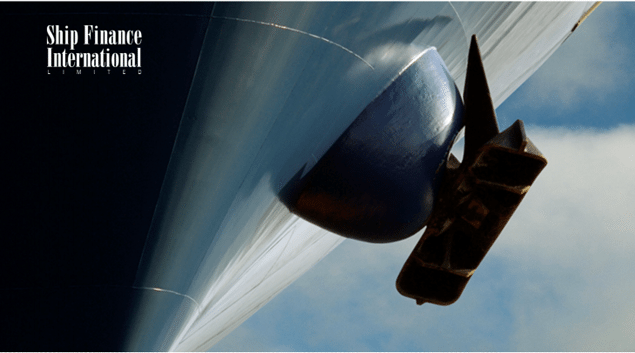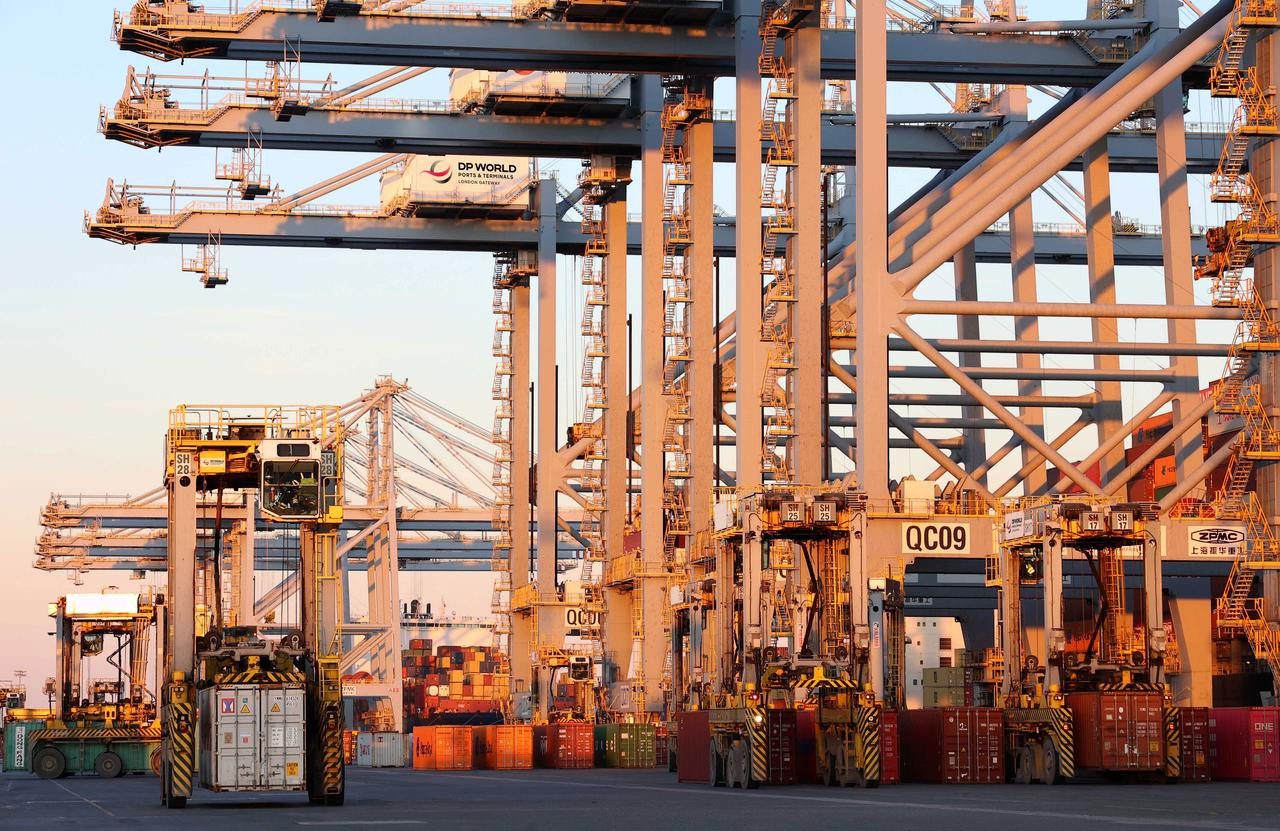click for larger
By Roger King, CreditSights (re-published with permission via Castalia Blog)
Separated at birth: The Reasonable Man and GAAP.
Somewhere along the line, lease accounting lost itself in the trees. A long lease tenor usually triggers finance lease accounting where part of the monthly cash payments are not considered revenue; if there are additional put/call features to minimize residual risk, none of the payments are revenue because the deal is unconsolidated as an equity investment.
Ship Finance International Limited (SFL) is an excellent example. It owns big ships and drilling rigs, financed on its books with secured and unsecured debt and equity, and bareboat charters them out to substantial operating companies for big monthly checks over a long horizon.
Minimum contracted backlog at the end 2003 was $4.8 billion, and growing. Total 4Q13 cash rent payments received were $154 million vs. $70 million GAAP (general accepted accounting principles) revenue; EBITDA from these rent payments is $113 million vs. $37 million GAAP; total debt is $2.9 billion vs. $1.7 billion GAAP; interest coverage is 3.5x vs. 2.0x GAAP; and pro forma EV multiple is 10x vs. 23x GAAP—pro forma SFL looks Significantly better than GAAP SFL.
Two older VLCCs (sold) and two very large containerships (customer call option exercised) left the fleet in 4Q13 and two newbuildings were cancelled, but the 2014 SFL outlook is very positive: a new drilling rig was recently delivered ($222 thousand/day charter for five years plus extensions and a put option); four new large containerships begin deliveries in late 2014; seven medium-size containerships with long-term charters were just purchased; and the Frontline cash sweep should become in the money as tanker market day rates rally. Bondholder upside is primarily equity driven. The two converts trade in-the-money while the two Norwegian Krone bonds are adjustable-rate and short-maturity.
4Q13 By the Numbers
Operating revenue (all sales are cash, no accruals) fell -9% YoY, primarily from the smaller Frontline (FRO) fleet with no cash sweep and prior frontloading of certain drilling rig contracts. On the positive side, two suezmaxes began trading in the rising spot market, but their operating expenses also increased costs. Operating EBITDA from the vessels declined -16%. In addition, there was a net $2 million non-cash gain relating to derivative valuation.
GAAP revenue is significantly less since the offshore business and some of the container leases are in unconsolidated 100% owned subsidiaries. These are large deals (the new rig delivered is $600 million cost), so long-term residual risk is mitigated by combinations of puts and calls that essentially define a fixed terminal value. GAAP calls these equity investments. The FRO charters are classified as finance leases, relegating $12 million 4Q13 cash revenue to return of capital.
Pro forma consolidation of the investment subsidiaries and backing the finance leases into operating changes the income statement and balance sheet. Total debt increased 71% versus GAAP but EBITDA more than doubled, significantly improving major credit metrics.
Balance Sheet
Major 4Q13 changes were sales to third parties of two FRO VLCCs and “call” of the two very large containerships by charterer CMA CGM. Since the containerships were on a complicated French tax lease, balance sheet impact was minimal. FRO paid $122 million to cancel its two leases, including a $79 million unsecured note. SFL netted $20 million cash after paying its debt secured by the vessels. Remaining $194 million SFL debt secured by the FRO vessels is now below scrap value, allowing SFL flexibility if FRO encounters another reorganization. Scheduled annual amortization is $67 million, with $167 million available under the FRO-related borrowing limits.
The West Linus jack up rig delivered in February, on 15-year bareboat charter to North Atlantic Drilling (NADL) at $222 thousand/day for the first five years with a 15-year put (so it becomes an unconsolidated equity investment). NADL subchartered the rig to Conoco at $375 thousand/day for five years plus up to four-year extension. Financing is $125 million cash equity plus $475 million secured term loan. The $70 million predelivery loan on the books at 2013 year end was repaid.
Four large, high-spec containership newbuildings begin delivery in 4Q14 and 1Q15. Total contract price of $340 million will include $100 million equity, of which $60 million deposit is already paid. Debt financing is not in place.
Two of the four containerships ordered in China were cancelled due to construction delays with expected return of deposits. The second pair might also be cancelled.
SFL recently purchased seven 10-year old 4,100 TEU containerships with 5.4 year average charters remaining plus call options (sounds like another investment subsidiary). Terms are confidential, but the sellers were German KG Partnerships. These tax-structured investment deals bought heavily into the container sector and many cratered while the downcycle extended. They should be an excellent source of supply for SFL (in fact, it is amazing it took so long for this one but capitulation is not quick).
Liquidity is $150 million available from various non-FRO revolvers, $59 million cash, $8 million cash at the unconsolidated subsidiaries, $56 million short-term cash equivalents, plus another $50 million Horizon second-lien notes marketed at 40 in “cash equivalents”. The $79 million FRO note is in other assets, but probably more liquid than HRZL.
Outlook
Backlog at year-end 2013 from minimum contracted charters is $4.8 billion with 10-year weighted average term. Expected EBITDA off that is $4.3 billion. Identifiable upside is about $400 million for the first five years of the West Linus charter, whatever the four containership deliveries bring in beginning 2015, the seven purchased containerships on 5-year remaining charters, and cash sweep upside from FRO.
The 4Q11 FRO restructuring dropped the average lease rate by $6.5 thousand/day on the FRO vessels from about $22 thousand/day. However, SFL receives a recovery sweep of that amount out of 100% of the rates FRO gets in its charters. There was no 2013 cash sweep, but spot is back up to the low 20s, making a 2014 cash sweep possible. The sweep is paid annually based on full-year average rates; FRO prepaid $50 million in a previous lease adjustment (See: Frontline: Great Deal for FRO, SFL, and the Sector 12/6/11).
While sector exposure has changed from 100% FRO tankers to 50% offshore drilling, most of the backlog is with Fredriksen affiliates: SeaDrill, Frontline, North Atlantic Drilling, and Deep Sea Supply. That is not necessarily a bad thing – it kept FRO out of bankruptcy and leads to contract opportunities.
Executive Summary
- 4Q13 cash revenues and EBITDA fell from FRO fleet shrinkage, no 2013 cash sweep, and two containerships “called” by the charterer.
- Year-end revenue backlog is $4.8 billion with 10 year average life.
- Identifiable 2014 growth drivers are delivery of a $600 million drill rig, four containership newbuildings, seven containership purchases, and potential for renewed FRO cash sweep.
- Financial distress in the German KG partnership industry provides acquisition opportunities.
- The SFL outlook is positive; convert upside is equity-driven.

 Join The Club
Join The Club











